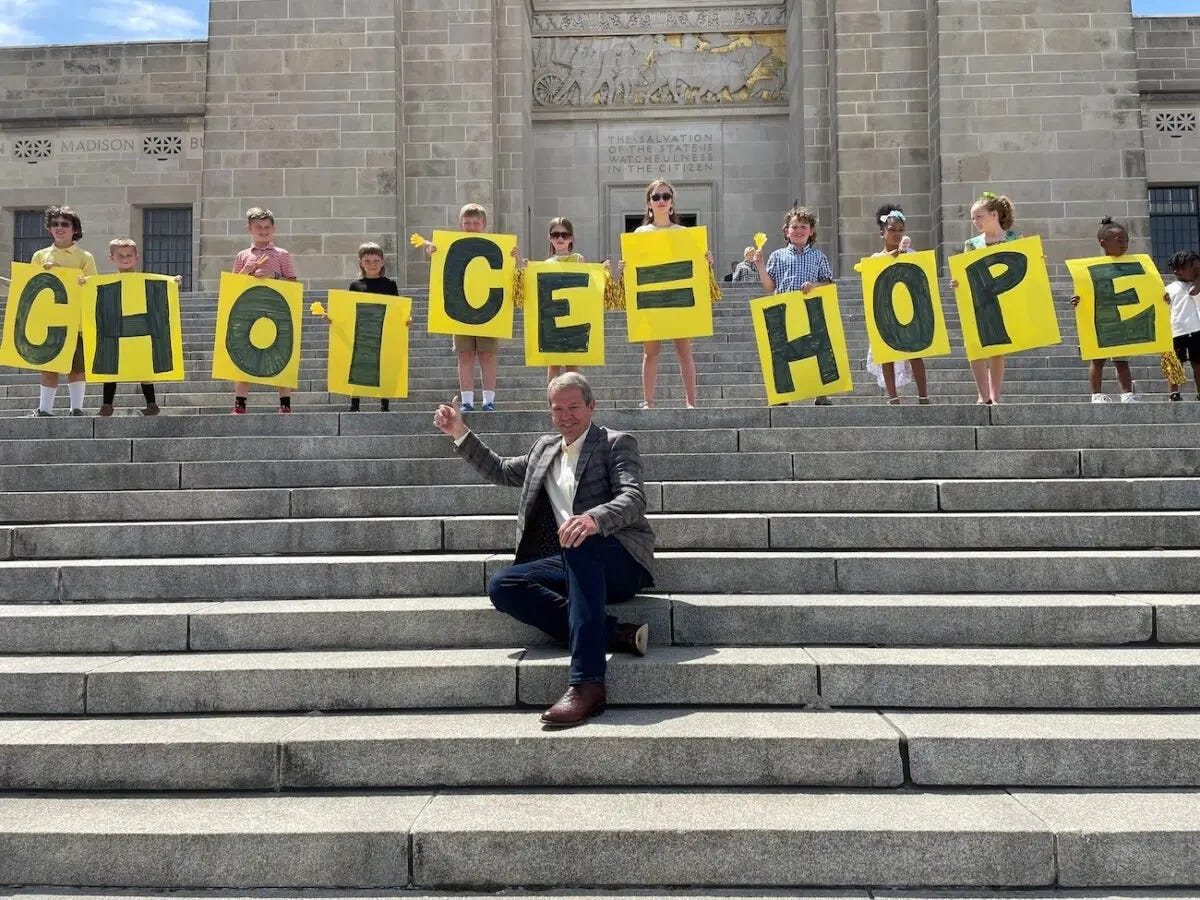by Sue Greenwald, M.D.
Photo Credit: Nebraska Office of the Governor
Maybe it’s just me, but I have always thought of Colorado as an anti-fa loving, free-speech-hating blue state. My impression was influenced by the way they gleefully decimated their own local economies with draconian lockdown rules during the Covid years- which were actually Covid months in many parts of Nebraska. Then I watched as the Coloradans voted to give away their relatively slim number of electoral college votes to the “popular vote,” i.e. California and New York, who certainly don’t need the help. That decision alone cemented their blue state bona-fides. If there are any politicians in Colorado who haven’t accepted bribes- I mean donations- from the teachers’ unions, they are probably hiding out in the Rocky Mountains in an off-the-grid cabin, hugging a Trumpy Bear.
So, when I saw this headline in my morning news, the world turned a little on its axis and I almost dropped my coffee.
Test Scores, Graduation Rates Soar in Colorado After School Choice Expands
I read the article so you don’t have to, and it is interesting.
Denver Public, the state’s largest school district, was dismal in 2007. In that “graduating” class, only 39% graduated. Five times more students dropped out (10%) than went on to college (1.7%). In contrast, the class of 2022 graduated 76% with the dropout rate cut to 3.8%. Recently released rankings of average ACT and SAT scores had the district high-fiving.
Before you start jumping to identity politics conclusions, the demographics of Denver schools are 52% Hispanic, 25% White, and 14% Black.
In the charter schools, 21% of students are English Language Learners, whereas only 16% of students are ELL in the traditional public schools. So, this isn’t “white privilege” in action.
Charter schools were already legal in CO, but there were only 20 of them authorized in Denver Public before the change in focus to school choice occurred.
Quoting the article:
“In 2008, Colorado passed the Innovation Schools Act, allowing districts to implement “innovative” ideas and practices and, specifically, obtain waivers for policies and rules that otherwise hinder education.
The legislation gave designated Innovation Schools more autonomy over budget, curriculum, and approaches to teaching. It also allowed schools to hire teachers without a teaching license but enrolled in alternative teacher preparation programs. These freedoms are similar to the freedoms that charter schools enjoy, but the difference between an Innovation School and a charter school is that the district runs the Innovation Schools.
"Charter schools [and Innovation Schools] tend to employ more alternative teachers," Mr. Lundeen (a CO general assemblyman) said. "Teachers that will get their certification, their license over time.
"If you have a bona fide rocket scientist, who in the second chapter of her life wants to go back and teach students, she belongs in the classroom teaching math, teaching physics, teaching chemistry. And the charters welcome that type of individual."
The model the state followed is called the “Portfolio District Stategy”.
The three prongs of this strategy are 1. Choice for families, 2. Autonomy for school providers and 3. Accountability for student outcomes.
Since 2008, Denver Public has authorized around 100 Innovation and Charter schools. During the same time period the district “closed, replaced or restarted” 35 failing schools. They took accountability seriously.
Today, statewide, there are 265 charter schools and 107 Innovation schools. Nearly 18% of students are served by these “school choice” options in Colorado.
Mr. Lundeen said that giving more choice to parents involves them more in their child's education, while expanding teacher choice brings more high-quality individuals into the classroom.
Charter and Innovation Schools embody the "Golden Triangle of public education: ... an enthusiastic student, engaged parent or parents, and an exceptional teacher."
"Charter schools tend to promote that triangle instead of providing protections for a teacher who may or may not be the strongest, most exceptional, most enthusiastic teacher available," he said. "Unions are about keeping people in the classroom because they're union members. The unions are not about keeping people in the classroom because they are exceptional teachers."
Not surprisingly, pushback from the teachers’ unions has been significant:
“When a charter school employs a teacher, that teacher isn't required to join a union. As such, the union misses out on that teacher's union dues. And unions, typically, are significant financial contributors to Democrats.
Mr. Lundeen was quick to point out that moderate Democrats "usually see the sense and positive outcomes of school choice."
During the Opportunity Scholarship debate at the Nebraska Legislature this year, one proponent mentioned that Nebraska is 30 years behind the times in school choice options. Colorado began charter schools in 1993, so that person was exactly right.
It appears that Red State Nebraska could take a few lessons in liberty from our Blue State neighbor to the west. Who would have ever guessed?




